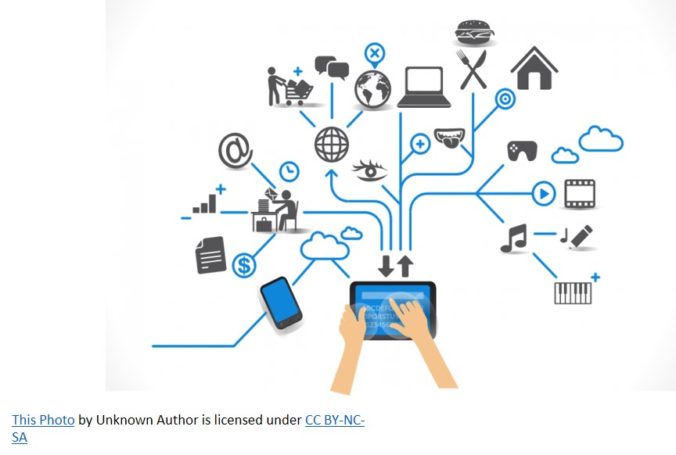The internet of things (IoT) is not ready for the real world. Or at least it is not ready for my world. Or I am not ready for its world. For the past 24 hours, I experienced a frustrating, yet telling, example about just how tough it is to get everyday devices to maintain communication with each other.
It started innocently enough. Pam turned our newest TV, the 55 inch 4K device from Sony, off Friday night. It was working perfectly when she turned it off. Neither of us used it until Saturday afternoon, when I turned it on to watch the Belmont Stakes. I had just returned from a great day with my PCA Los Angeles friends, having driven about 220 miles in my 89 Carrera to Arrowhead and back to celebrate Porsche’s 70th Birthday. I had had an awesome time, but I was a little tired and just wanted to chill. Then I turned on the TV, and I immediately noticed the sound of sound. At first I thought one of us had accidentally muted the sound, but that was not the case. Then I thought that maybe one of the buttons on the TV remote, versus the cable box remote, had been accidentally pressed before the TV was turned off. As it was hanging out behind our pillows, this was not an unreasonable assumption. Independently, Pam made the same one, many hours later. It was, however, not correct. By then the world had another Triple Crown winner to talk about. I had missed the call, which given the tightness of the race and the rarity of accomplishing the feat, was too bad. So much for my ability to chill for a bit.
Starting to get frustrated, I began pushing all the set up buttons I could find on both remotes. All to no avail. Still no sound. At that point, I started to think like the technical guru I am supposed to be, and I rebooted the cable box. No effect. Still no sound. I got even more technical. I unplugged the TV, waited the de rigueur minute or so, plugged it back in. Voila, still no sound. I then got even more technical. I unplugged and re-plugged all the cables. Still no sound. Worse, still no chill, and more than a tad more frustration.
Then I got creative. I tried to use Netflix on the internet, bypassing the cable box. Interestingly, and somewhat surprisingly, I had to reset my wireless connection to get to Netflix. No problem. No sound either. At that point Pam had come home and I was grousing and grumbling. Given my state of agitation, she wisely chose to ignore me. I played with the remotes some more, and all I got was an earful of silence. Lots of picture, but no sound whatsoever.
By then I had spent about 90 minutes on this issue and decided to contact Best Buy, as that was where we had purchased the TV. After about five tries to get a human in the Geek Squad to speak with me at 5:30 on a Saturday night, I was connected to a nice young man who simply said, “You have done all the triage we would have walked you through. We have no idea what else to tell you to do. You need to speak with Sony technical support directly.” He gave me the number and then transferred me, but not before I had rummaged through my desk, found the invoice for the TV and was relieved to know that it was still under warranty. Of course, the Sony support line was closed. I figured I would call back on Sunday, which I did. It was still closed, but I listened to the message long enough to jot down their technical support web site.
I went to the web site, and the first thing I noted was a support issue relating to a recent Android TV upgrade. I sort of knew the TV an Android TV, but as we are an Apple house, I never had given it much thought. I decided to read the symptoms that might exist if the upgrade went awry. The last symptom partially related to the absence of sound. Intrigued, I checked out what to do about it. It turned out I had already taken the first couple of steps, but the third step, relating to a menu driven factory reset, was new to me. I followed the directions and did the reset. Again to no avail, as the sound was still silent. There was a fourth step, forcing a factory reset, but the text seemed to indicate that the preferred method was the one I had already done.
Feeling disappointed and still grousing, I decided to try to have an online chat with Sony tech support. I initiated the communication, got connected to a support person, typed in my issues and waited for a response. None was forthcoming, as a minute or so later, I was informed that our connection was lost. As far as I was concerned, that was par for the course. I started over, re-typing all my data and issues and started a chat session again. Shockingly, I got the same tech person. He remembered me, and just asked one question in the chat dialog, “Have you done the forced restart yet.” I replied, “No.”
He sent me a link to a document describing how to do the forced reset, and as I was following it, I inadvertently disconnected myself from the chat session, which reminded me once again why I hate communicating via keyboard. “I am a boomer, not a millennial,” I muttered to myself, as I generated the enthusiasm for going thru the reset and resulting setup process yet again. I had to enlist Pam to do the forced reset. It was not hard to do, it just needed more than two hands at once. We began the process, and I sat and waited while it went thru its steps. It took about 30 minutes, the bulk of which were spent while it checked for updates, which I found ironic, as I still thought that that was how I got into this mess in the first place. The reset ended, I dutifully navigated via the remote buttons to enter all passwords and waited for sound. No luck. Still silence.
I went back to the document describing the steps on how to fix the Android upgrade, and noted that it said that if the forced reset did not work at first, try it again. So we did. Same result. No sound. By now I was resigned to the fact that I needed a new TV. Pam was in favor of just dropping it into the alley to be recycled by one of the myriad of people trolling our alley for castoffs.
I had spent between five and six hours on this, and I was really frustrated. Thinking I would give the chat one more try and then set an appointment to have a service tech come out, I started the chat process yet again. I re-typed all the information, adding the fact that I had done two forced resets, thereby eliminating that from consideration. I was sort of surprised, and a little disappointed, that my new chat partner was different from before. Thankfully, it didn’t matter. She reviewed my comments. She thanked me for all work I had done already. Then she asked me if I had tried to use an App since I had done the forced reset. I said, “No. The last time I tried was the previous day before the forced reset.” She suggested I try again. I figured why not. So I tried it. I put on Netflix, and, to my amazement and utter delight, I got sound. It was glorious. Feeling somewhat better, I tried to use the cable box again. No sound. Damn.
I went back to the chat dialog, reported the results and waited. While I was waiting, inspiration struck. Maybe I needed to reboot the cable box again, now that I had reset the TV. I informed my chat companion I would do so, and she agreed. Unbelievably, and to my utter amazement, when the cable box rebooted, sound came out of the TV. Problem solved—at least for now. I am sure I will need to go about this choreography again after another unilateral upgrade of an independent device occurs.
So almost 24 hours after I began trying to get my TV to work, it worked. TVs and cable boxes have been co-existing for quite some time. I would think that they should be pretty easy to keep synced, but I guess not. I can hardly wait for the issues that will crop up when we try to keep really complicated devices, like cars, synced. I guess we’ll hear the sounds of crashes when we don’t, and I will yearn for the sound of silence.




